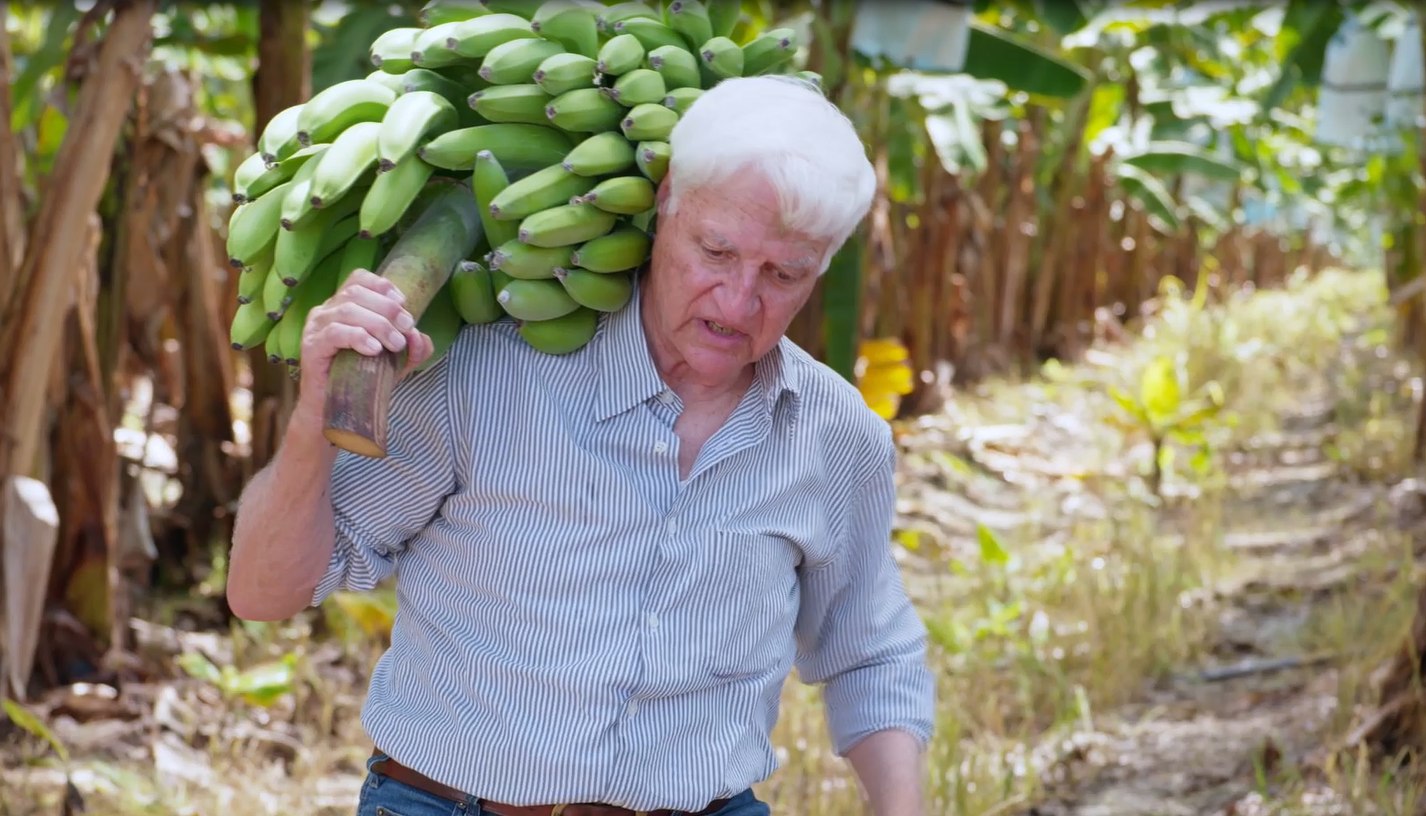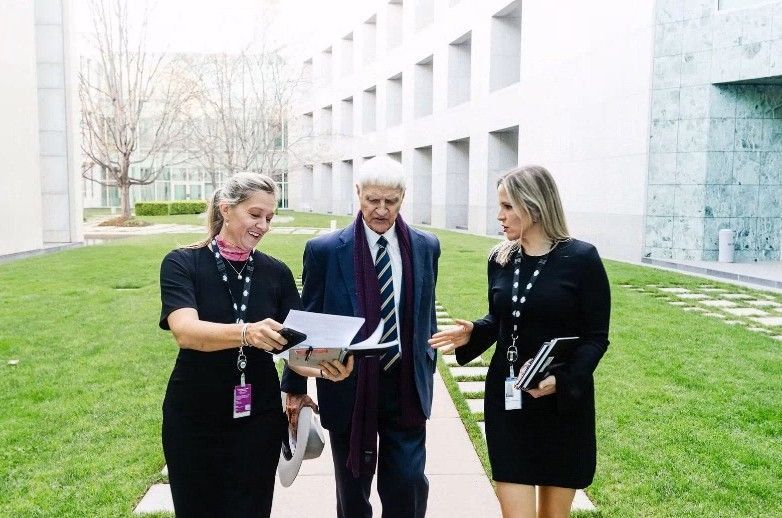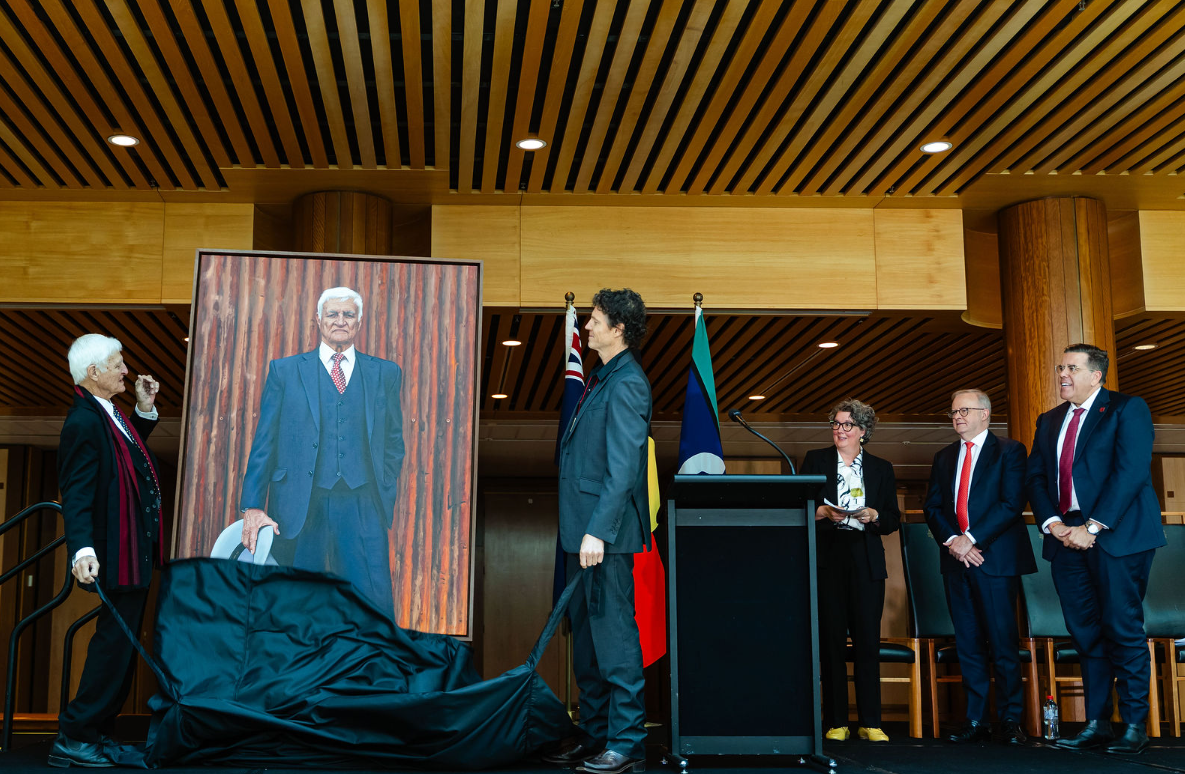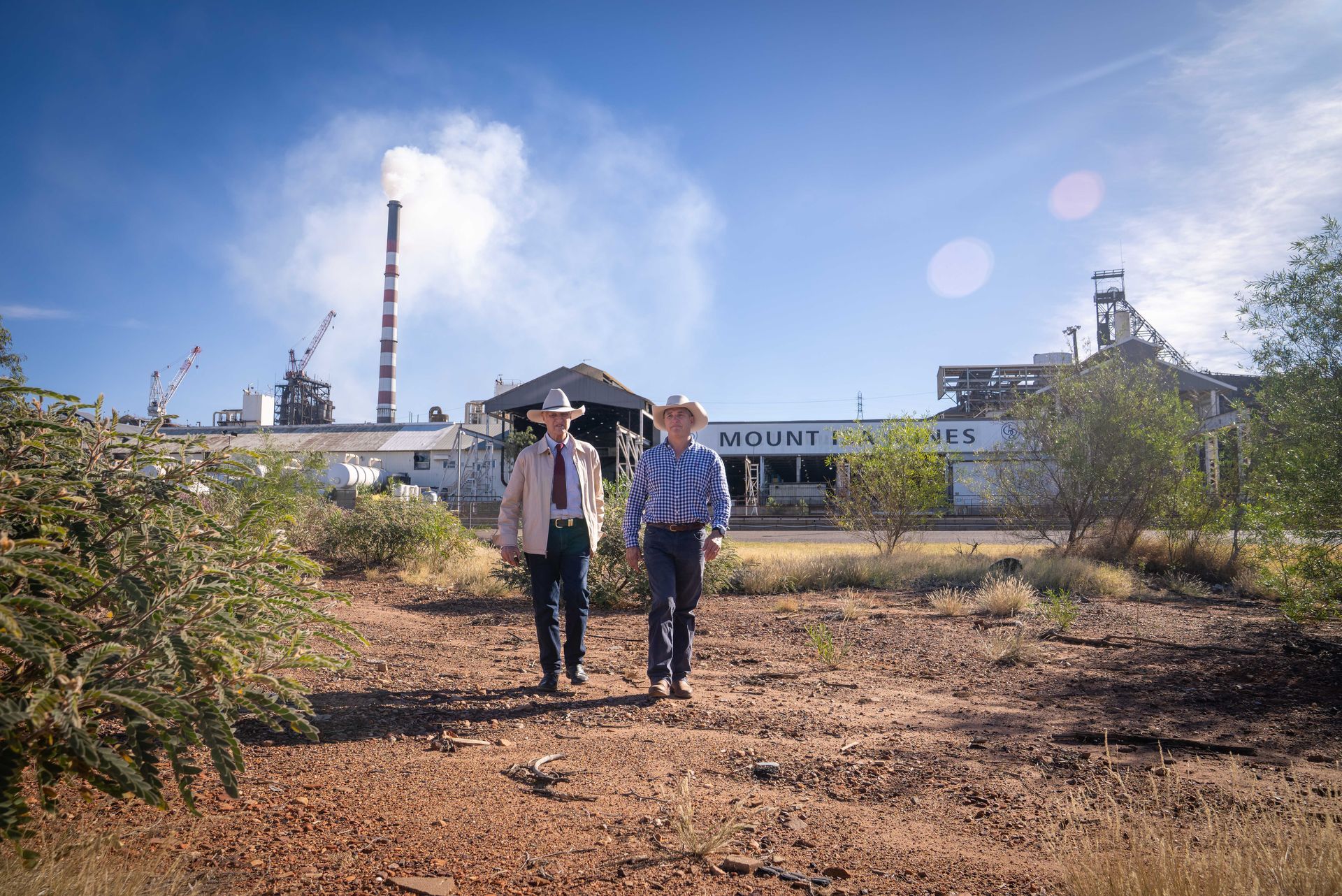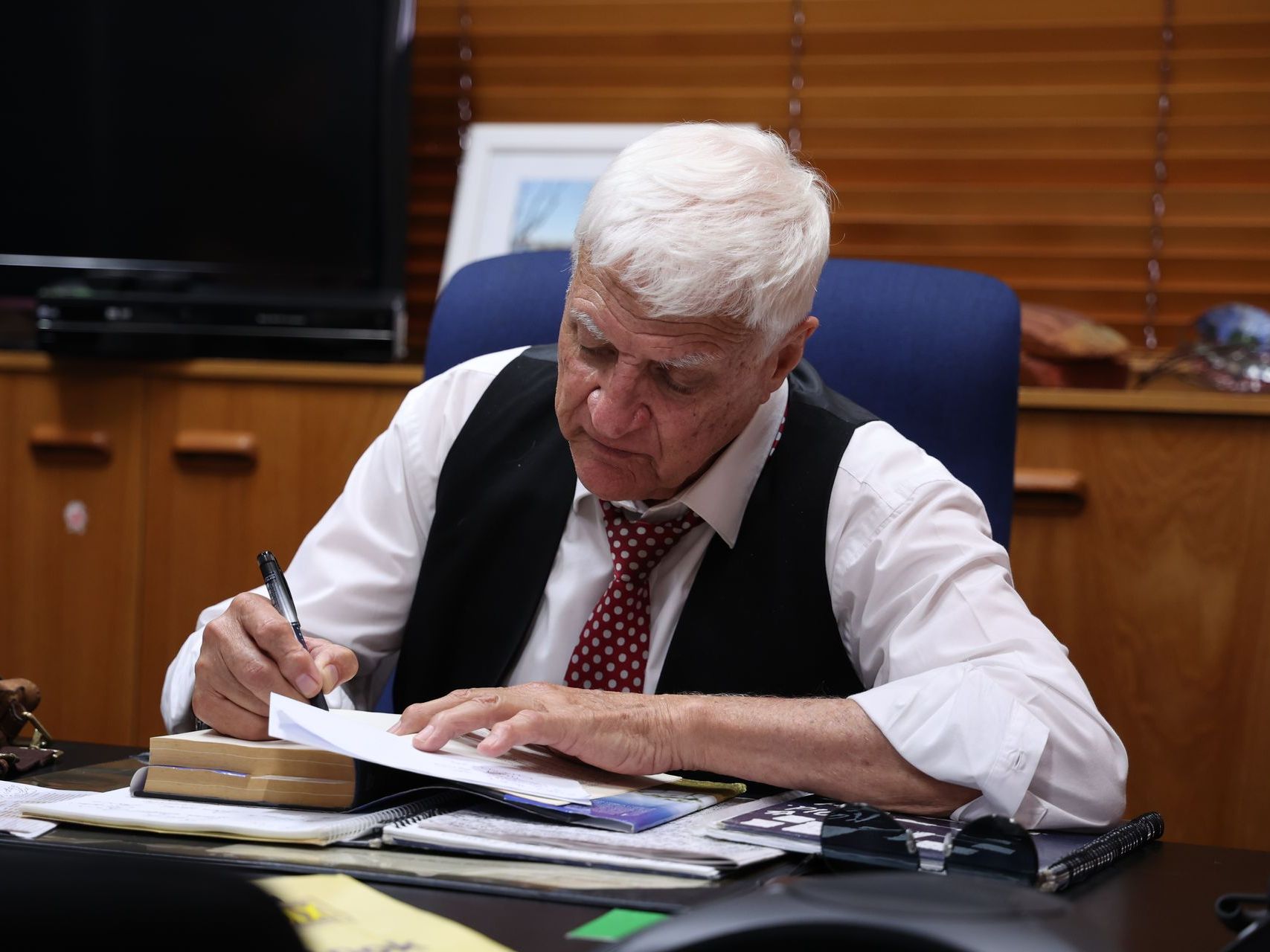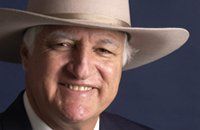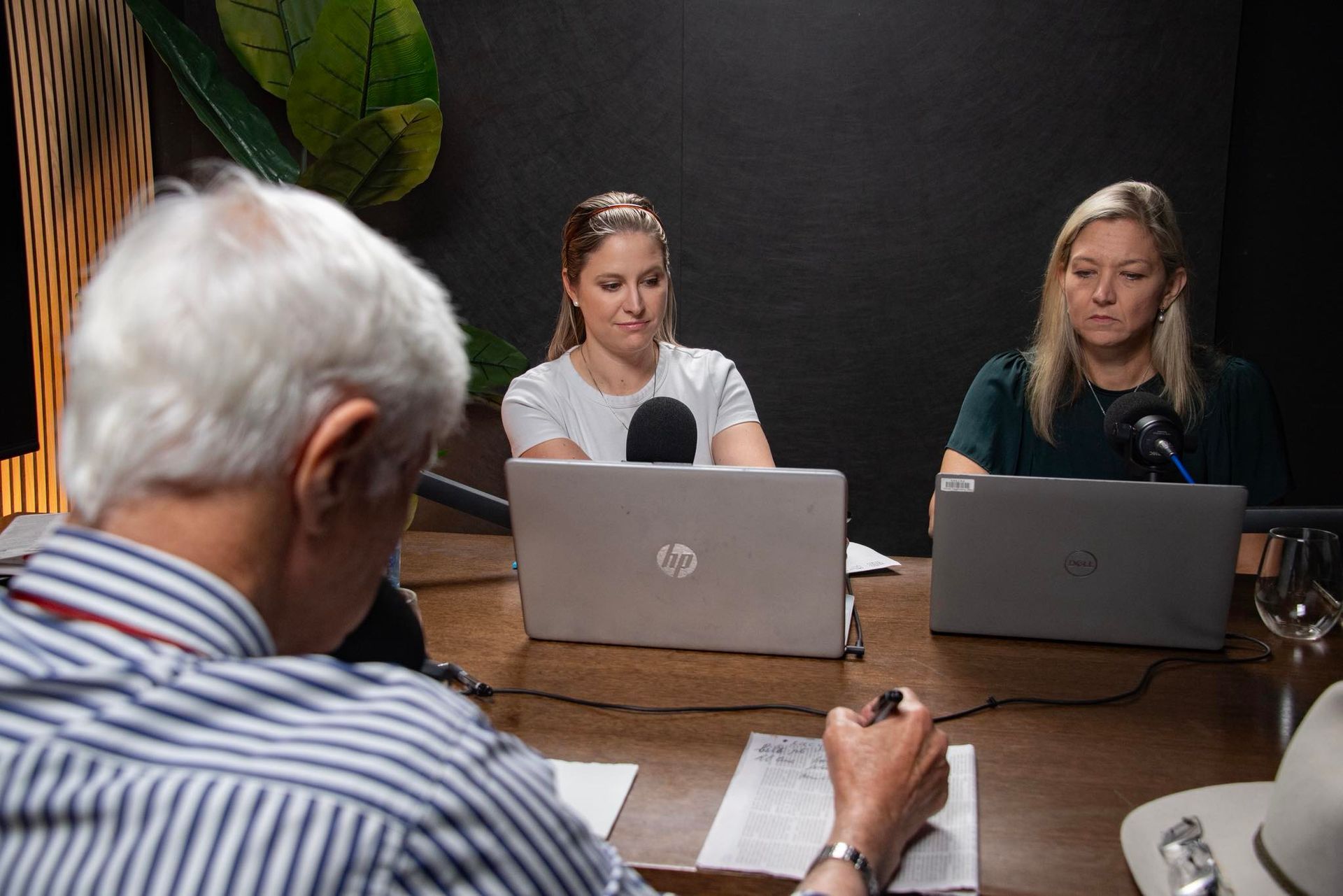Katter calls for decentralisation of govt departments following self-absorbing budget
ANALYSING the budget for the 50th time in his career, Kennedy MP Bob Katter says the government’s ministers and their departments have no idea what’s going on outside Canberra, and it shows in the 2024 papers.

As he flicked through the 186-page Budget Paper No. 2 document, Mr Katter said he noted high volumes of spending across a wide spectrum of issues, yet devoid of any succinct detail, as if “the government was trying to cover all bases.”
“Out of a budget worth about $700bn, a good $30bn to $40bn is going back to government departments under the guise of ‘streamlining and developing new processes, or creating reports or improving compliance’,” Mr Katter said.
“I believe the Prime Minister has given orders to his ministers, on what he wants, but they, or their department heads have no idea what’s happening out here. They’re fifth-generation Canberra bureaucrats, a ‘million miles away from North Queensland’.
“So now they’ll be ‘looking into it’ and creating reports, and by the time those reports come back, we’ll have a new government.”
Mr Katter said it was only fair to note this budget lacked vision just as much as previous budgets in the past couple of decades.
“Take Ben Chifley, he gave us telephones, he eradicated tuberculosis, he built the Snowy Mountains and he delivered secondary industry with the Holden motorcar. He did all that in a bit over five years. Now if you put all the Prime Ministers together since I've been here you wouldn't get anything that remotely resembles that.
“There’s money in there for roads, for health, for housing, but it’s all global – there’s no deadlines, details or specifics, we’ll have to vigorously fight for the crumbs – especially in regional Queensland.
“The government outlined it was committing $21bn on infrastructure spend on Queensland, below that it detailed $4bn would go to improve the Southeast transport networks, and then it listed just $467m for the Bruce Hwy corridor.
“Or, we can fight for scraps in the $1bn Roads to Recovery Program.
“If you’re sitting in Brisbane and Canberra making these decisions, you’re a long way away from our crumbling roads.”
Mr Katter said it was evident it was time for the decentralisation of government departments, especially with measures included which would decimate rural Australia.
“They’re hitting us with the ban of live sheep exports, whatever is left of this industry previously destroyed through the deregulation of wool will be gone.
They’re hitting us with the New Vehicle Efficiency Standard – driving up the costs of four-wheel drives which people not just remote towns, but regional cities as well.
“Why isn’t the agriculture department based where the agriculture is? Last time I checked, there aren’t too many crops growing at 18 Marcus Clarke St, Canberra.
“When I was made the mines minister in Queensland, I moved the mines department to North Queensland – where the action was. When I was made First Australians minister, I moved the department to Cairns.”
Mr Katter said he did his best to find the positives in the budget and accepted funding linked to critical minerals under the controversial Future Made in Australia Fund and said he would be vigorously chasing funding for the building of facilities in the greater Townsville region.
Among the funding that interested Mr Katter included:
- $566m over ten years for Geoscience Australia to map Australia’s national groundwater systems and resource endowments to increase industry investment and identify potential discoveries for all critical minerals.
- A Critical Minerals Production Tax Incentive from 2027–28 to 2040–41 to support downstream refining and processing of Australia’s 31 critical minerals to improve supply chain resilience, at an estimated cost to the budget of $7.0bn over 11 years from 2023–24 (and an average of $1.5bn per year from 2034–35 to 2040–41)
- $10.2m in 2024–25 for pre-feasibility studies for critical mineral common-user processing facilities in partnership with state and territory governments to enhance Australia’s capacity to process critical minerals, sovereign capability and economic resilience.
- $20.9m over four years from 2024–25 (and $1.2m per year ongoing) to undertake further consultation on incentives to support the production of, and demand for, low carbon liquid fuels.
Some examples of generous departmental funding include:
- $20m over five years for the Department of Agriculture to maintain policy capability and an additional $42m for the department to support it in the rollout of drought related programs.
- $48m over four years to implement further reforms to the Australian Carbon Credit Unit scheme.
- $28.6m over four years to the Inspector-General of Water Compliance to undertake inquiry, oversight and public engagement functions.
- $54.7m over two years to administer, coordinate and promote the Government’s Future Made in Australia agenda.
- $182.7m over eight years from to strengthen approval processes to support the delivery of the Government’s Future Made in Australia agenda.
- $17.5m over ten years to establish a new Parliamentary Joint Committee on Defence.
- $84.2m over four years to the Department of Education to increase audits of providers in the child care sector.
- $68.6m over five years to increase resourcing for the Digital Services Contact Centre to support people using Workforce Australia Online services.
- $10.6m over four years for the implementation of a reporting solution for the Australian Skills Guarantee.
- $155.6m over two years to the Australian Taxation Office (ATO) to continue operating and improving the Government’s Digital ID, myGovID, and the system which supports authorised access to a range of government business services.
- $1.2bn over five years for sustainment of, and essential enhancements to, critical aged care digital systems.
- $110.9m over four years to increase the regulatory capability of the Aged Care Quality and Safety Commission.
- $21.6m over four years to establish a reshaped National AI Centre (NAIC) and an AI advisory body within the Department of Industry, Science and Resources.
- $84.5m over five years to establish a regulator to administer the New Vehicle Efficiency Standard, including to capture emissions data.
- $10.0m in 2023–24 for a national communications campaign to raise awareness of the New Vehicle Efficiency Standard.
- $399.1m over five years from 2023–24 (and an additional $616.8, from 2028–29 to 2034–35 and $93.4 million per year ongoing) in additional resourcing for the Net Zero Economy Authority (the Authority), the Department of Employment and Workplace Relations, and the Fair Work Commission to promote orderly and positive economic transformation associated with decarbonisation.
